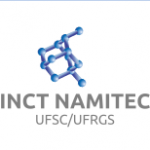Wireless energy transfer
We research inovative solutions for powering devices without wires.
Capsule endoscopy (leader: prof. Valner Brusamarelo – LSI/UFRGS)

Capsule endoscopy is a technique that employs a small wireless camera built into a small device. During the procedure, the device is swallowed by the patient, allowing them to take pictures as it travels through the digestive tract. The characteristics of the application impose several restrictions related to the small volume of the capsule. This restriction mainly impacts the energy autonomy of electronic circuits, as it limits the size of batteries. Furthermore, high quality imaging and capsule motion control are necessary features to improve diagnostic capability and cannot be achieved without expending considerable extra energy. To overcome these problems, wire energy transfer based on inductive coupling has been considered as a possible solution to power electronic systems and recharge batteries. In this project, technological solutions are being studied on several fronts to maximize the energy transfer efficiency for an endoscopic capsule.
References
- Tracking and Dynamic Tuning of a Wireless Powered Endoscopic Capsule
- Study of a Wireless Energy Transmission System for an Endoscopy Capsule with Dynamic Tuning
Circuits for RF Wireless Power Transfer (leader: prof. Fernando Rangel – LRF/UFSC)

We are developing a solution to power remote sensing devices that do not have their own power source via wireless power transfer. To do so, we are studying low-power (integrated) circuits to dynamically configure an array of antennas in order to reduce signal dispersion and consequently increase energy transmission efficiency.






